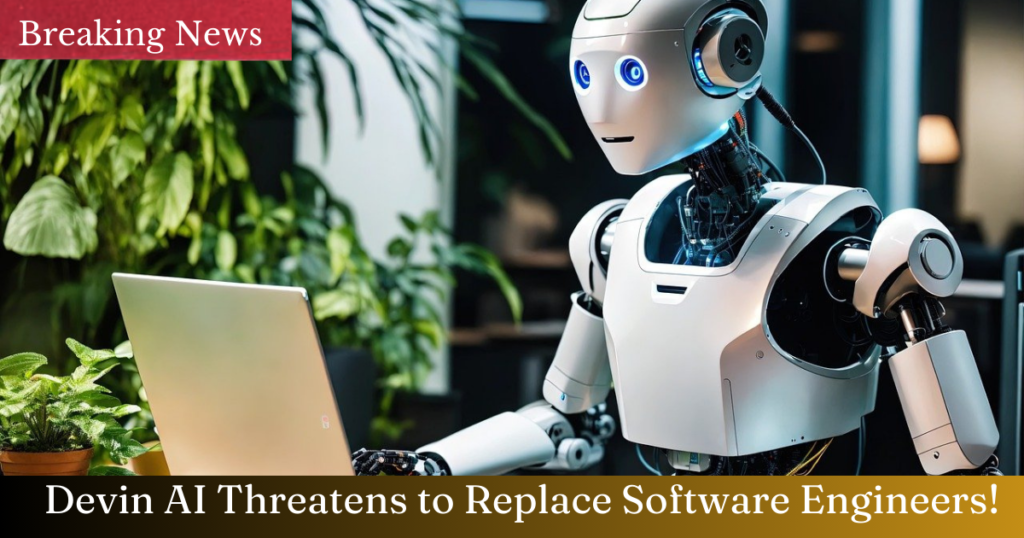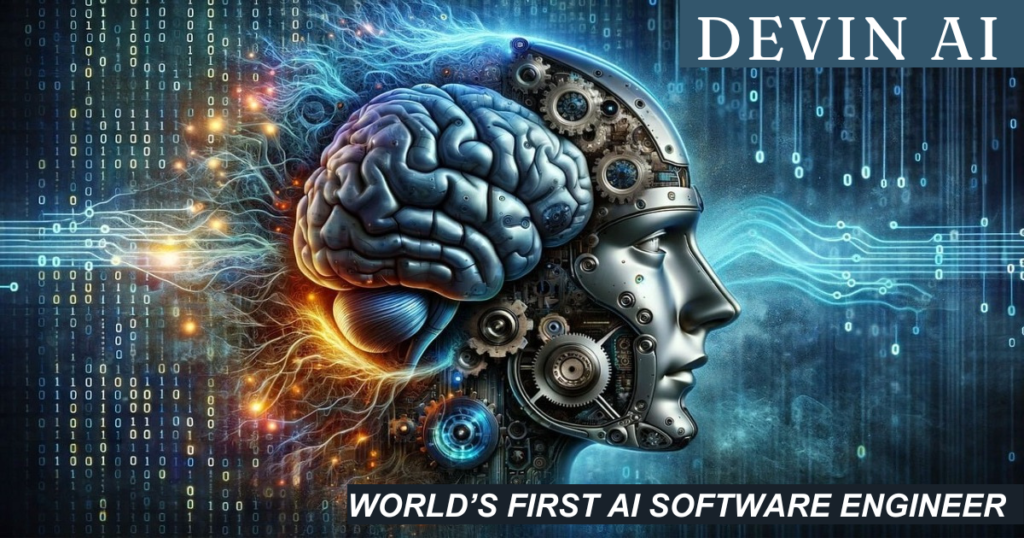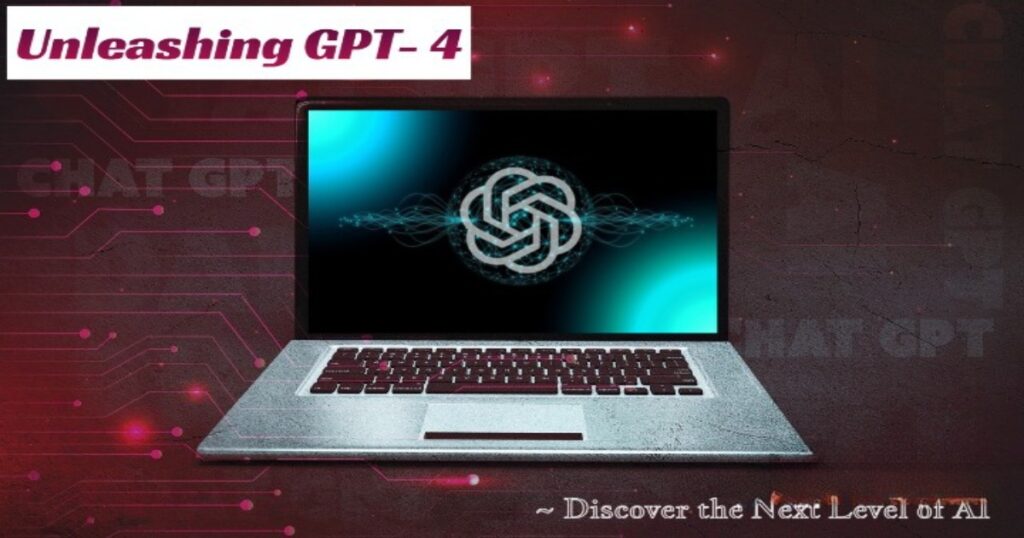Rise of GPT-4: The killer of Software Engineers? : Imagine a world where Software Engineers are no longer needed. A world where complex code can be generated by an artificial intelligence (AI) system, in a matter of seconds. Is this the future we are heading towards with the emergence of GPT-4 and its successors? As more and more industries turn to artificial intelligence to automate processes and improve efficiency, it’s natural to wonder if software engineering jobs are at risk of becoming obsolete.
But is it really that simple? Can a machine like ChatGPT-4 truly replace the years of experience and expertise that software engineers bring to the table?
In this article, we’ll explore the potential impact of GPT-4 on the software engineering job market. We’ll delve into the pros and cons of relying on AI to create code and consider the broader implications for the future of work.
Join us on this journey as we explore the potential impact of GPT-4 on the world of software engineering. Are software engineers at risk of becoming obsolete, or is there still a place for human ingenuity in a world of AI? Let’s find out.
What Exactly Is GPT-4?
On March 14, 2023, OpenAI unveiled their latest language model, the Fourth Generation of their Generative Pre-trained Transformer (GPT-4) series. What sets this iteration apart from its predecessors is its ability to take both text and images as input, making it a multimodal model.
GPT-4 was trained on public data and data from third-party providers, where it was fine-tuned through reinforcement learning using both human and AI feedback for policy compliance and human alignment.
As of now, access to the commercial API is provided via a waitlist, and GPT-4 is only available in a limited form through ChatGPT Plus. Despite this, many have reported that the ChatGPT-based on GPT-4 is a significant improvement on its predecessor, GPT-3.5-based ChatGPT, although it still faces some of the same challenges.
Technical details of the GPT-4, such as its size, have not been disclosed by OpenAI, but this has left many curious about this remarkable new language model. The release of GPT-4 marks a significant advancement in the field of AI language models, with its advanced training methods and multimodal capabilities offering great potential for a range of applications such as content creation, translation, and customer service.
As GPT-4 is further refined and developed, it will undoubtedly play a significant role in shaping the future of AI and natural language processing.
Capabilities of GPT-4 Model
The recent release of ChatGPT, a natural language AI chatbot, has generated a lot of buzz around AI. People are using it for a variety of tasks such as writing emails, poems, song lyrics, college essays, and even some code. However, as with any new technology, there are questions about whether it will ultimately displace human coders and developers.
While the text-creation capabilities of AI are advancing rapidly, it’s difficult to predict how sophisticated they will become. At present, ChatGPT has limited capabilities for programming, and may only be another tool in a developer’s kit to handle simple tasks.
Human languages and programming languages operate similarly, with their own sets of rules, syntax, and semantics. While programming languages may be more complex, their rigid structure and unambiguous semantics make them easier for machines to learn and execute.
OpenAI developed ChatGPT, and it is powered by a large language model trained on a massive amount of text scraped from the internet, including code repositories.
List:
- GPT-4, the latest iteration of language models, has demonstrated its capability to generate coherent sentences in obscure languages with limited training data.
- Its coding capabilities are impressive as well, having been built upon its predecessor GPT-3.5, which could generate code snippets in significantly less time than a human programmer.
- Also, GPT-4’s larger context window makes it more efficient in generating lengthy codes with hundreds of lines. Its applications have expanded to include game development, payment apps, websites, and plugins for WordPress.
- GPT-4 can even generate code from sketches or outlines of the desired output.
- It uses algorithms to analyze the text, and humans fine-tune the training of the system to respond to user questions with full sentences that sound like they were written by a human.
In addition, an example on OpenAI’s website shows how ChatGPT can be used to help debug code. However, the responses generated from prior code lack the capability to replicate human-based QA, which means it can generate code that has errors and bugs.
OpenAI acknowledges that ChatGPT ‘sometimes writes plausible-sounding but incorrect or nonsensical answers.’ Therefore, it should not be used directly in the production of any programs.
Key points of the GPT-4:
- GPT-4 can generate coherent sentences in obscure languages with limited data.
- It has impressive coding capabilities, building upon its predecessor GPT-3.5.
- GPT-4’s larger context window makes it efficient in generating lengthy codes. This version already has been used for game development, payment apps, websites, and plugins for WordPress.
- The GPT-4 model can generate code from sketches or outlines of the desired output, but like other AI systems, GPT-4 still has some limitations.
However, this does not mean that programming skills will become fully obsolete. Humans are still needed to compile, run, test, and deploy code. GPT-4 and other AI systems are still limited in their capabilities.
Limitation of GPT-4
GPT-4 has gained significant attention for its impressive capabilities in coding. However, upon closer inspection, it becomes apparent that it is not without limitations.
Firstly, GPT-4 is not human and lacks sentience, merely possessing knowledge of programming languages. It responds to prompts with what it thinks is the most likely answer, but does not know whether it is correct or not. As a result, its generated code may technically be accurate, but not function as intended.
It also requires guidance from users with at least basic programming knowledge, as it cannot be fully trusted.
Secondly, GPT-4 is susceptible to bad prompts, and its confidence in providing answers does not necessarily reflect whether the prompt or answer makes sense. While it may not be seen as a significant limitation, the development process requires questioning, refining, and iteration, which GPT-4 lacks.
Furthermore, GPT-4’s short context window limits its suitability for lengthy and complex code, increasing the likelihood of producing malfunctioning code. Despite these limitations, GPT-4 is a significant step towards AI achieving human-level competency in coding, and some believe it could soon outcompete humans in this area.
Notable figures such as Elon Musk have expressed concerns about the possibility of AI taking over humanity and have advocated for a moratorium on AI research and development.
Will GPT-4 Replace Software Engineers Soon?
There is concern among some people that GPT-4, and other AI language models, may eventually replace human software developers. However, this is unlikely to be the case for high-value developers who are capable of building complex and innovative software. While low-value developers who build simple and repetitive software may be at risk of being replaced, this could actually have a positive impact by allowing more skilled developers to focus on higher-level tasks.
To put it simply, while GPT-4 may replace certain aspects of programming that involve repetitive tasks such as writing simple codes, refactoring codes, and documentation, it cannot replace the creativity and problem-solving skills that human programmers possess. Programming involves a range of skills beyond the purely technical that machines cannot replicate or match. It requires critical thinking, problem-solving, and an understanding of software architecture and design, which are essential skills that are difficult to teach to machines.
Additionally, programming involves more than just coding. It requires a human expert to inspect and analyze the code generated by GPT-4 to ensure that it works as intended. While GPT-4 may be able to generate functional code, it lacks the ability to understand the context and purpose behind the code it generates. Human programmers, on the other hand, possess the necessary understanding of a project’s requirements and can make informed decisions about the appropriate code to use.
Credit: Lex Clips | Creator: Lex Fridman
*
It is important to note that even if GPT-4 does replace some developers, this is not something that will happen overnight. Human oversight and creativity will still be required in the development and deployment of AI systems. Additionally, the implementation of AI technology will also create new job opportunities, especially in areas such as data analysis and machine learning.
Furthermore, human programmers play a critical role in designing and architecting software systems. They possess the creativity and problem-solving skills required to design and implement software solutions that meet the needs of users. This is something that machines cannot do.
Overall, while the use of GPT-4 and other AI language models will undoubtedly have an impact on the software engineering industry, it is unlikely that these technologies will completely replace human developers. Instead, they will be used to augment and enhance the work of developers, freeing them up to focus on more complex and creative tasks.
In conclusion, while GPT-4 may be proficient at generating code from natural language prompts, it cannot replace the human expertise required for programming.
Human programmers possess a range of skills that machines cannot replicate or match, and the demand for skilled programmers is likely to remain high for the foreseeable (in the near) future.
Latest News On AI Coding Threats
Pre-trained AI code generation has raised concerns about intellectual property rights as it currently cannot differentiate between codes that are licensed in a restrictive or open manner. This could potentially result in legal issues related to licensing compliance if AI borrows code from a copyrighted repository. A lawsuit has already been filed against a different OpenAI-based product called GitHub Copilot due to this problem.
However, this does not mean that there is no place for AI in software development. Just like automation is being used for basic incident response in security operations centers, AI could serve as a programming tool for handling lower-level tasks. In fact, AI is already being used to some extent in software development.
GitHub Copilot is a prime example of this, as it allows developers to use ChatGPT to improve their code, find bugs and add tests. Similarly, Amazon offers CodeWhisperer, a machine language-powered tool that helps increase developer productivity by generating code recommendations based on natural language comments and code in the integrated environment. Additionally, someone has even created a Visual Studio code extension that works with ChatGPT.
While there are still concerns to be addressed with regards to AI-generated code, it is clear that AI has the potential to significantly enhance the work of software developers. By automating repetitive or lower-level tasks, AI can free up developers to focus on more complex and creative work. However, it is important to continue monitoring and addressing the legal and ethical implications of AI in software development.
What Should Software Engineers Do Now?
As a software engineer, it’s natural to feel uneasy about the potential impact of AI on your career. However, it’s important to stay informed and adapt to the changing landscape of the field.
Here are some actionable tips to help you stay ahead of the curve:
1. Embrace AI as a Tool: Instead of viewing AI as a threat, see it as a tool that can enhance your skills and productivity. Learn how to use AI to automate repetitive tasks and improve software quality. By embracing AI, you can become a more valuable asset to your team and employer.
2. Focus on High-Value Work: To avoid being replaced by AI, focus on building complex and innovative software that requires human creativity and expertise. This includes tasks like designing user interfaces, developing algorithms, and solving complex problems. By focusing on high-value work, you can differentiate yourself from AI and stay relevant in the field.
3. Develop a Strong Network: Networking is essential in any field, and software engineering is no exception. Connect with other professionals in the field, attend meetups, and join online communities to expand your network. A strong network can provide you with new job opportunities, insights into industry trends, and support when you need it.
*
4. Develop Soft Skills: While technical skills are important in software engineering, soft skills are also critical for success. Develop your communication, collaboration, and leadership skills to become a well-rounded professional. These skills can help you stand out in a crowded field and advance your career.
5. Stay Up-To-Date: The field of software engineering is constantly evolving, and it’s important to stay up-to-date with the latest developments in AI and software engineering. Attend industry events, read industry publications, and take online courses to keep your skills sharp and your knowledge current.
By following these tips, you can position yourself for success in the ever-changing field of software engineering. Remember, the key is to stay informed, adaptable, and always willing to learn and grow.
The Future of Software Engineering with GPT-4
The advancement of AI models like GPT-4 has been impressive, especially in their ability to solve complex LeetCode problems. However, it is crucial to recognize that this does not mean the end of human software engineers.
Instead, the limitations of GPT-4 highlight the importance of human expertise in the software development process.
1. Collaborating with AI: The future of software engineering involves finding a balance between AI models and human engineers. AI models such as GPT-4 can provide developers with assistance in generating code snippets, debugging, and optimizing algorithms. However, human engineers can offer creativity, insight, and critical problem-solving skills that AI may not be able to match.
2. AI as a Tool for Human Expertise: As AI models like GPT-4 continue to evolve, they will become better equipped to understand and solve complex programming problems. However, this does not mean that software engineers will become fully obsolete. Instead, AI models will serve as powerful tools that augment human expertise, leading to more innovative and efficient solutions.
3. Developing Skills for the Future: To remain relevant in the age of AI, software engineers need to focus on developing their skills and embracing the opportunities presented by AI models like GPT-4. This includes understanding the strengths and limitations of AI, learning to collaborate effectively with AI models, and developing a deep understanding of algorithms and data structures that are critical to modern software development.
Furthermore…
4. Overcoming Limitations: While AI models have shown tremendous potential, they still have limitations. For instance, they may not be able to adapt to unexpected circumstances or unique situations. Software engineers need to be able to anticipate and solve these challenges, which require human expertise.
5. The Human Touch: The software development process involves more than just writing code. It requires creativity, innovation, and the ability to understand and solve complex problems. These are skills that AI models may not be able to replicate fully. Therefore, human engineers will continue to play a critical role in the software development process.
In summary, the rise of AI models like GPT-4 does not mean the end of software engineering jobs. Instead, it presents an opportunity for collaboration between AI models and human engineers to create more efficient and innovative solutions.
Software engineers need to develop their skills, embrace the opportunities presented by AI, and continue to offer the human touch that is essential to the software development process.
Conclusion
In conclusion, the rise of GPT-4 is undoubtedly a significant development in the field of AI, and its potential to automate certain aspects of software engineering cannot be ignored. However, it is important to recognize that the role of human software engineers remains critical in the development process. AI models like GPT-4 can assist in generating code snippets and optimizing algorithms, but they cannot replace the human creativity, problem-solving skills, and ability to adapt to complex challenges.
Instead of viewing AI as a threat to the software engineering profession, it is crucial to embrace the opportunities presented by these technologies. By working collaboratively with AI models like GPT-4, software engineers can unlock new possibilities for innovation, efficiency, and creativity. It is up to the industry to embrace this new era of collaboration and skill development, where both AI and human engineers work together to build the software of the future.
Hopefully, this article ‘Rise of GPT-4: The Killer of Software Engineers?’ will provide sufficient information on the subject. It helps you to know the upcoming opportunities and challenges in the software engineering and IT field for Gpt-4 and the upcoming AI revolution.








Hmm is anyone else encountering problems with the pictures on this blog loading? I’m trying to find out if its a problem on my end or if it’s the blog. Any feed-back would be greatly appreciated.
Youre so cool! I dont suppose Ive read something like this before. So nice to seek out any individual with some unique thoughts on this subject. realy thanks for starting this up. this website is one thing that’s wanted on the internet, someone with a bit of originality. helpful job for bringing one thing new to the web!
Pingback: Meet Devin: World's First AI Software Engineer Crafting Code, Creativity, and Content with a Single Prompt - Techworld18